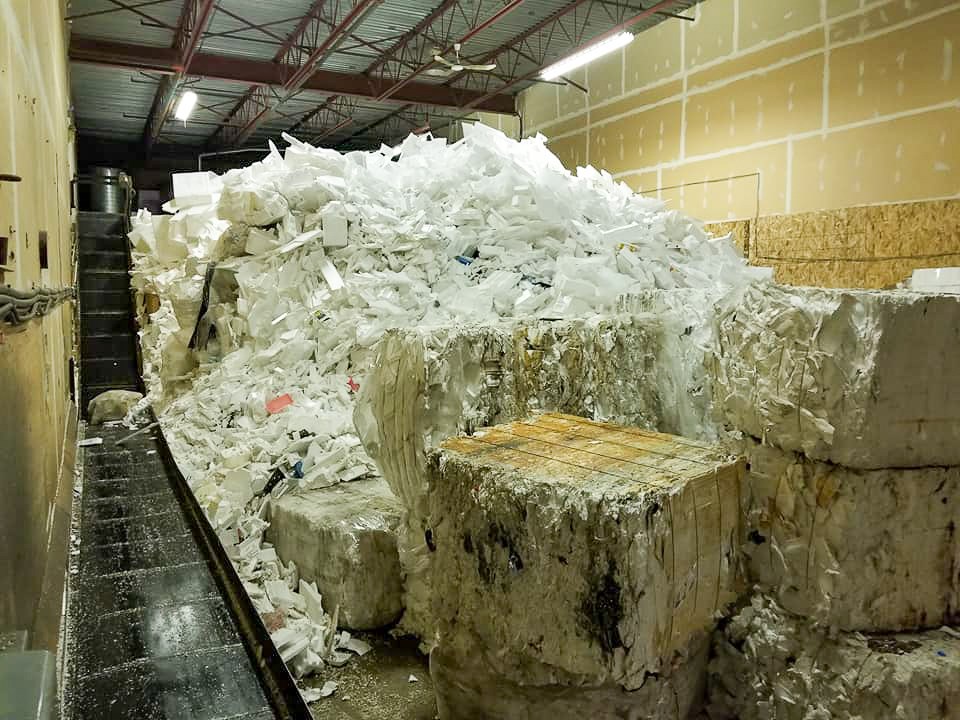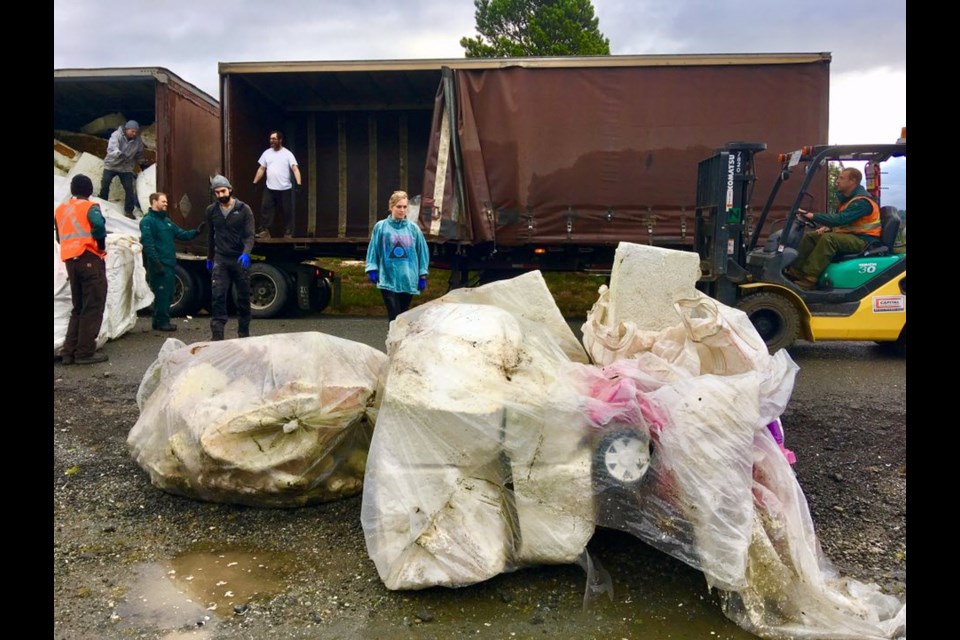The owner of a Coquitlam-based Styrofoam recycling company says it has been forced to shut its doors due to a decline in styrofoam diverted from Metro Vancouver waste facilities.
Foam Only's Mark Obedzinski, closed the facility Aug. 26, leaving 16 employees out of work, including eight mentally disabled workers.
But the impacts of the closure will reverberate beyond the company’s employees, said Obedzinski, who claimed Foam Only diverted 650 metric tonnes of polystyrene (commonly known by the brand-name Styrofoam) in 2018. That would make the company the biggest Styrofoam-only recycling facility in Canada, said the owner.
Of Metro Vancouver’s five transfer stations, only the North Shore and Coquitlam facilities accept expanded polystyrene (the Styrofoam you’ll find packing electronics and appliances). Last year, roughly 80 metric tonnes of expanded polystyrene was dropped off between the two depots, and on the Coquitlam side, all of it was diverted to Foam Only.
Still, of the 14,000 tonnes of waste Styrofoam Metro Vancouver generated last year, Obedzinski says his company only diverted 4%. After seven years of operation, he’s calling on Metro Vancouver and the province to find a solution to what he says is a lack of political will and appropriate regulations.
In an interview with Metro Vancouver’s Solid Waste Division, a spokesperson told The Tri-City News staff are still are still trying to figure out what impact Foam Only’s closure will have on the region’s operations but, in the meantime, Coquitlam transfer station is still accepting expanded polystyrene.
In its seven years of operation, Foam Only provided a single service: by compressing expanded polystyrene, the company created a material that could be up-cycled into consumer goods like door mouldings and picture frames, according to the company’s website.
Beyond Metro Vancouver, Foam Only had partnerships with dozens of other organizations, including SFU, the Vancouver Motion Picture Industry, Van Houtte Coffee, the District of Squamish and Whistler, according to its website. Yet even with these connections, the volume of Styrofoam making it to Foam Only has failed to ramp up, said Obedzinski.

Before Foam Only’s closure, Obedzinski said he spent years trying to make it work. In 2017, he said he lobbied Metro Vancouver’s Zero Waste Committee to implement a regime so that more Styrofoam would be diverted out of landfills. Last summer, Metro implemented a tipping fee on those dumping Styrofoam on the garbage side of the region’s solid waste facility.
Anyone whose load is made up of 20% or more of the expanded polystyrene gets charged a 100% tipping fee, or twice the original. But instead of siphoning off more Styrofoam to be recycled, Obedzinski says passing the cost on to individuals, businesses and haulers has done little to increase the volume of Styrofoam making it to his Coquitlam recycling facility.
The tipping fee, Obedzinski says, has acted more as a source of income to Metro Vancouver than a tool to alleviate the environmental costs of un-recycled Styrofoam.
In an interview with The Tri-City News, Paul Henderson, general manager of solid waste for Metro Vancouver, admitted that the region hasn’t seen any substantial increase in the volume of Styrofoam making it to Metro facilities since the implementation of the tipping fee on the material. But that’s not surprising, he said, when the tipping fee targets commercial operators and Metro transfer stations only receive a fraction of the Styrofoam recycled across the region.
Henderson also sees other forces at play.
In 2016, Metro calculated that about 1.3% of the total waste stream was made up of expanded polystyrene, equal to about 10,000 tonnes. Of that, about 2,027 tonnes, or 16%, was recycled. Two years later, of all the garbage produced in the Lower Mainland, the percentage of polystyrene making it into the trash was cut by more than half, from 1.3% to 0.5%.
“At a grocery store level, you’re starting to see a conversion away from foam containers to rigid containers,” said Henderson. “You’re also seeing it on a packaging level and [with] takeout food… we think there’s less of it being used in the region.”
“If the goal is a reduction in the mound of expanded polystyrene dispose of that we're absolutely seeing that.”
As Henderson and his team assess the impact of Foam Only’s closure, he points to a similar situation following a 2011 disposal ban on mattresses. The number of mattresses that ended up getting recycled spiked but, at the same time, a change in market conditions around mattress materials shifted and a number of recycling companies focused on mattresses went belly up. In that case, mattresses started getting shipped overseas to be recycled.
And while expanded polystyrene is a completely different market, in the wake of Foam Only’s closure, Henderson said his team is weighing all options.
In the short term, he isn’t counting out easing the disposal ban. That would mean more Styrofoam headed to the landfill, a counterintuitive outcome as the region appears to be reducing Styrofoam waste.
“It isn't the option that we like, but if there's no recycling capacity then disposal becomes an option,” said Henderson.



